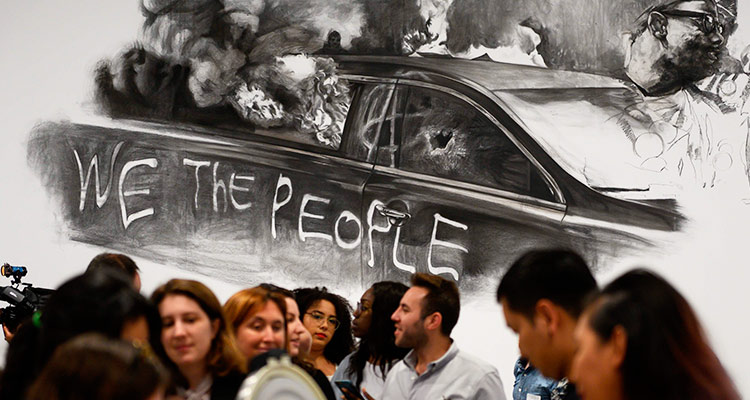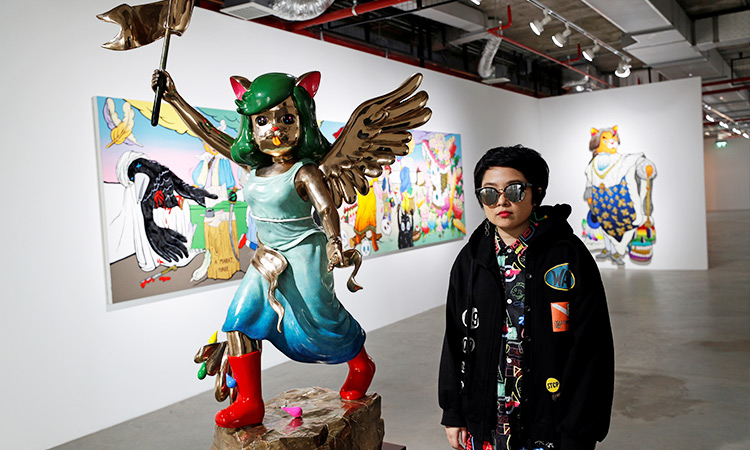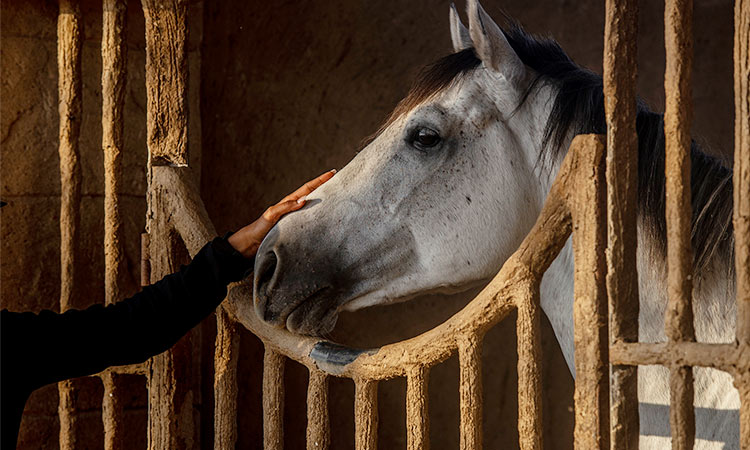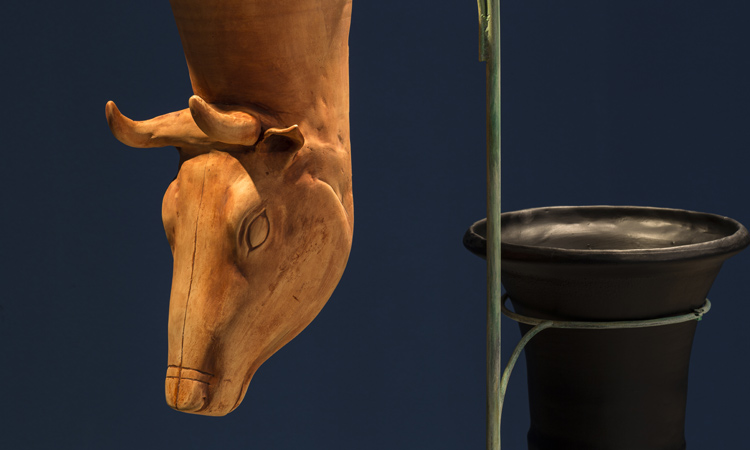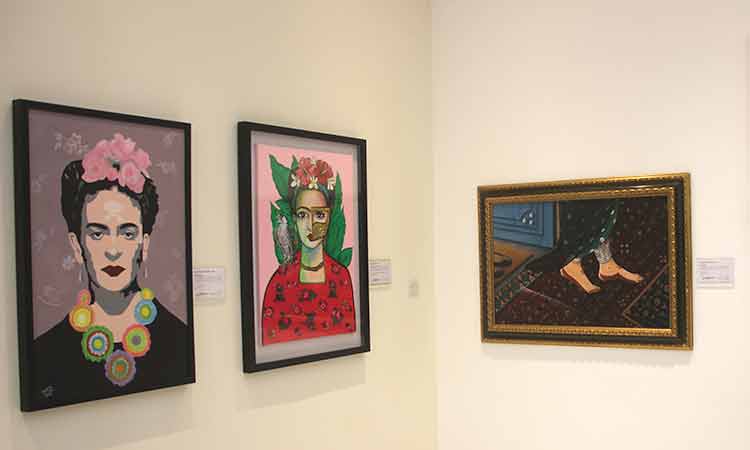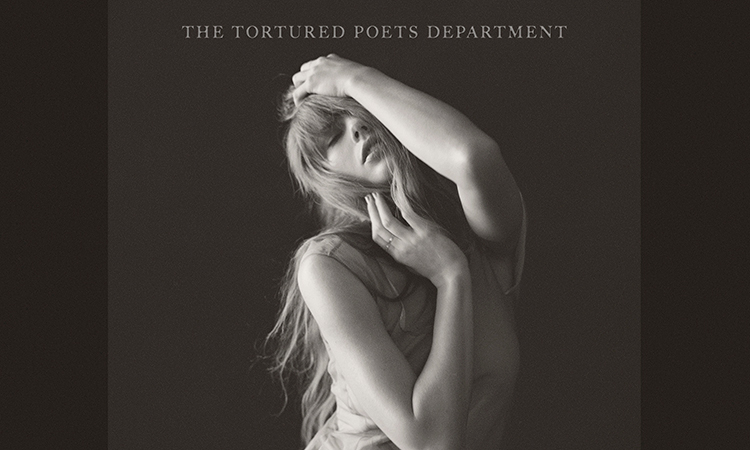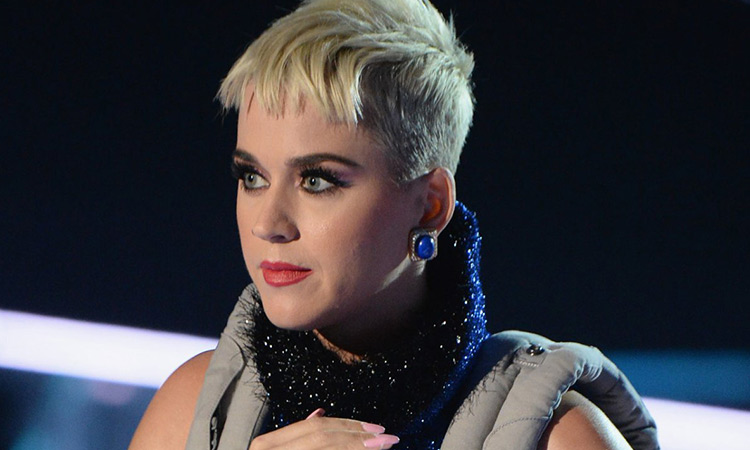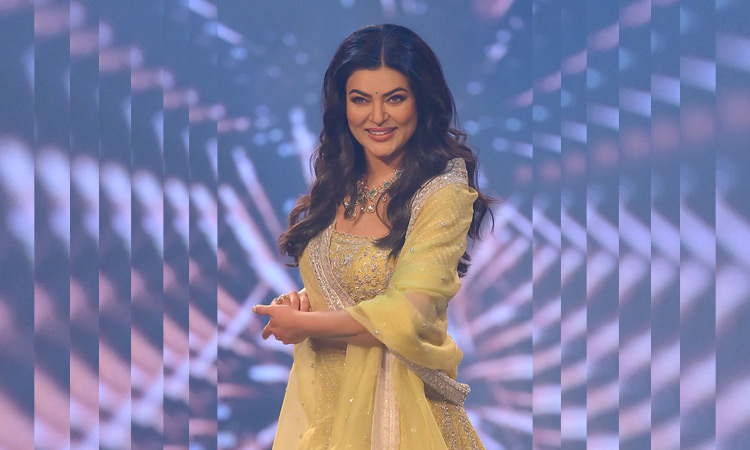Thai artist dishes out communal curry at US museum
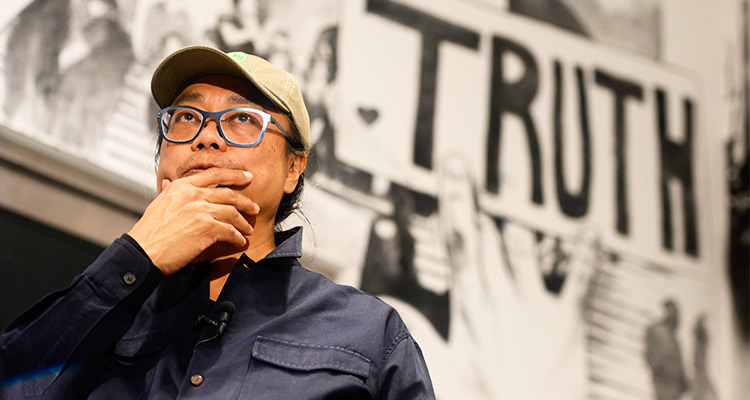
Thai artist Rirkrit Tiravanija speaks to members of the press at his interactive exhibit.
Rich or poor, liberal or conservative, from one corner of the globe to another, we all sit down to share a meal.
Thai artist Rirkrit Tiravanija is betting that this communal experience can break down artificial divides as he serves curry to visitors at the Hirshhorn Museum in an installation that opened Friday.
The feast is part of the art. Visitors fill their bellies with red, yellow and green curries while watching local artists cover the once white gallery walls with photorealistic drawings of protests in Thailand and the United States.
"There are people who would have never sat next to each other sitting next to each other, discovering each other or themselves in a different way.
In a 2010 presentation in Bangkok, Tiravanija did the cooking himself with open fires and boiling pots of curry alongside fresh ingredients -- an impossible task in security-minded US museums.
At the Hirshhorn, area restaurant Beau Thai is catering the food.
"It's not every day that we have heating elements -- otherwise known as fire to our fire wardens -- and food," quipped museum director Melissa Chiu.
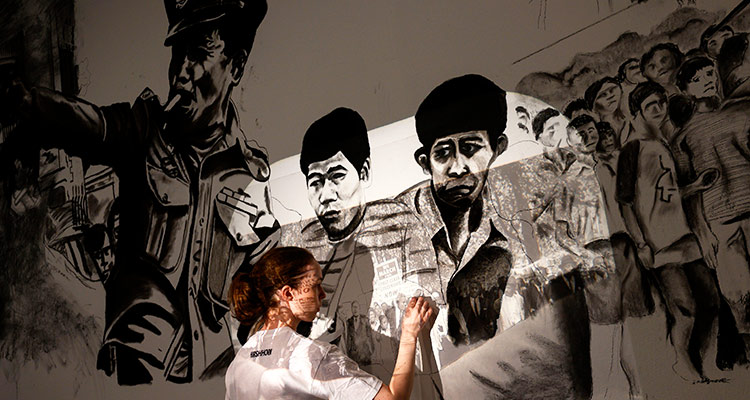
A local artist sketches over a projection at Thai artist Rirkrit Tiravanija's interactive exhibit.
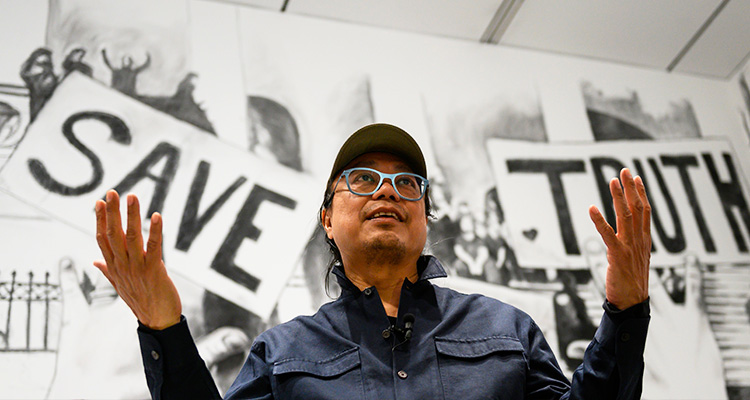
Rich or poor, liberal or conservative, from one corner of the globe to another, we all sit down to share a meal.
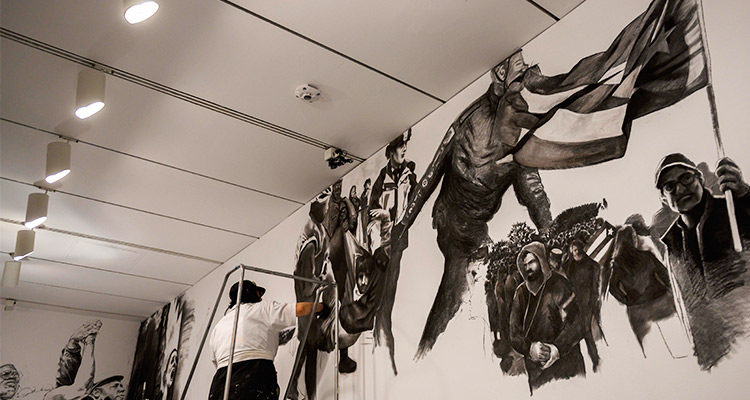
Visitors fill their bellies with red, yellow and green curries while watching local artists cover the once white gallery walls with photorealistic drawings of protests in Thailand and the United States.
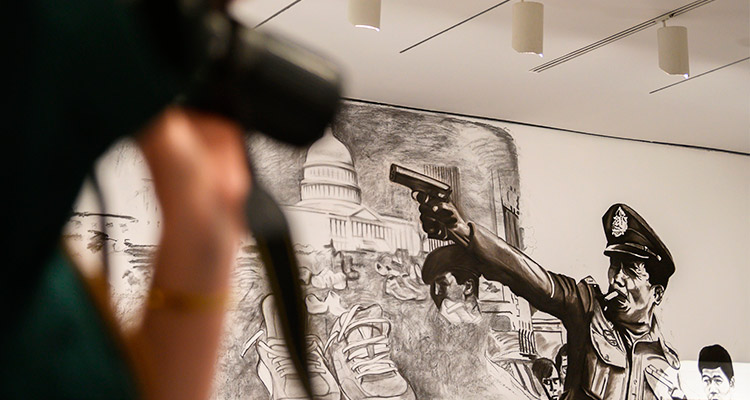
Tiravanija's use of parentheses and lowercase suggests the questions here are more of a "subtext."
'Irony of color'
The title of the installation, "(who's afraid of red, yellow and green)," is a wink to American artist Barnett Newman's "Who's Afraid of Red, Yellow and Blue?" (1966-1970) provocative series of four large-scale paintings, two of which were vandalized in museums.
Tiravanija's use of parentheses and lowercase suggests the questions here are more of a "subtext."
The colors in the title of Tiravanija's piece represent the military (green) and the two main factions of anti-government protesters in Thailand at their peak in 2010: the "red shirt" rural farmers and "yellow shirt" royalists.
"For me, it's the irony of the idea of the color," said Tiravanija. "I wanted to show that may be this color or that color but you still eat the same curries, you still live in the same place."
Societies have become more sophisticated and technologically advanced, but, the work recalls, a primal tendency to destroy one another remains.
People queue to be served a bowl of rice and curry as part of the interactive exhibit.
"We should have a better world now," Tiravanija said. "The terrible thing about it is that it keeps cycling back -- violence or the fear of the other -- and it's being used. It's not just inane, it's manipulation."
Breaking down barriers over a meal may sound utopian, but the murals serve as a reminder of societal frictions that lie just beneath the surface.
"It will get dense enough that it will cancel itself out. But in that sense, I would like to say, 'don't forget that it is still there,'" the artist said.
To supplement the experience, six films by emerging Thai filmmakers curated by independent director and Palme d'Or winner Apichatpong Weerasethakul are screened in one room, with Tiravanija's feature "Lung Neaw Visits His Neighbors" (2011) in another.
The latter film follows a retired Thai rice farmer living off the land in the bucolic surroundings of his native northern Chiang Mai province at a time when the capital Bangkok was erupting with political unrest.
It begs the question: in such paradisiacal surroundings, what else is needed?
Agence France-Presse
